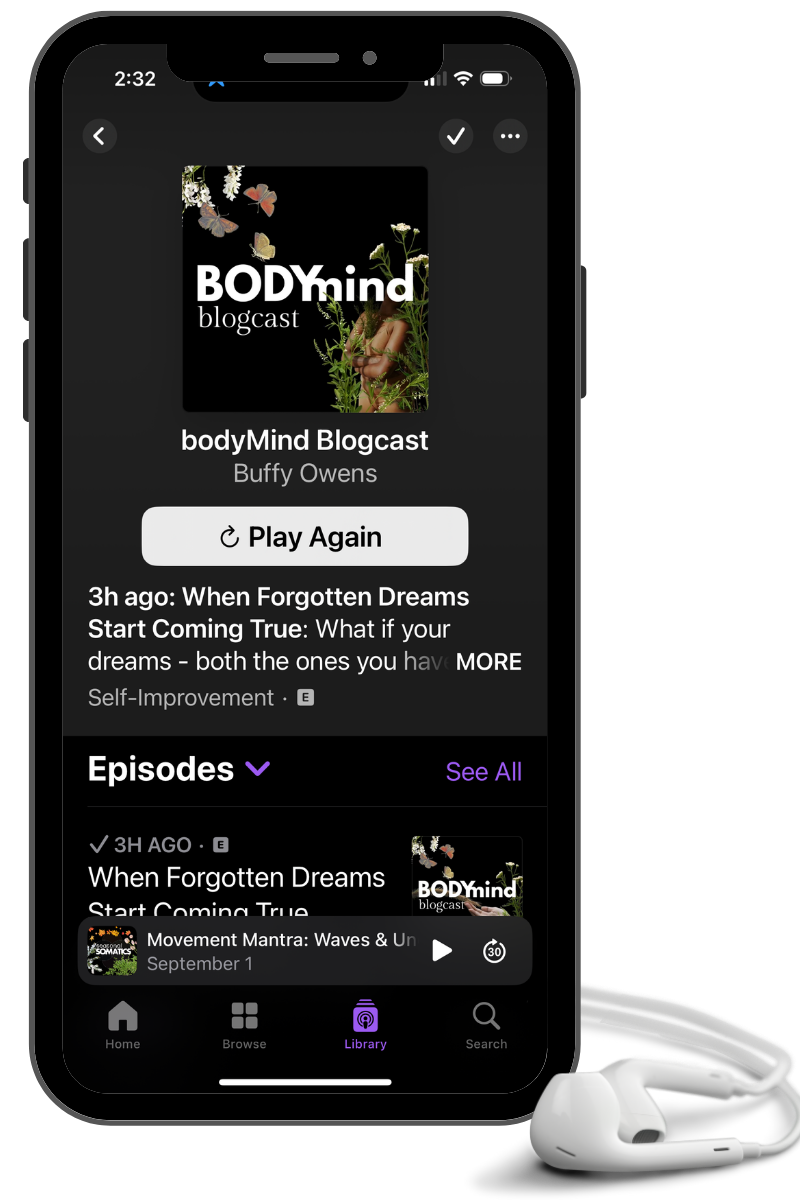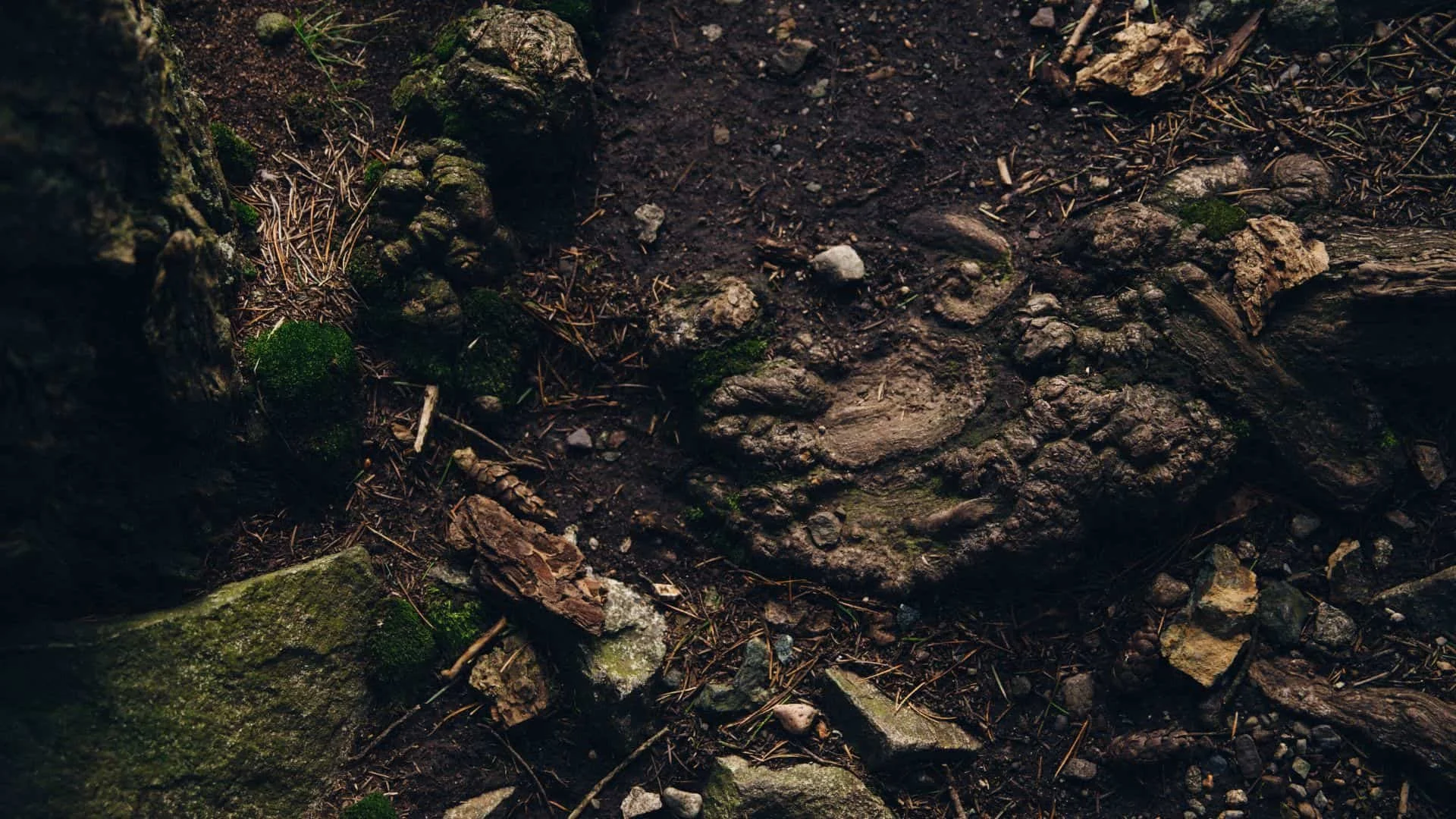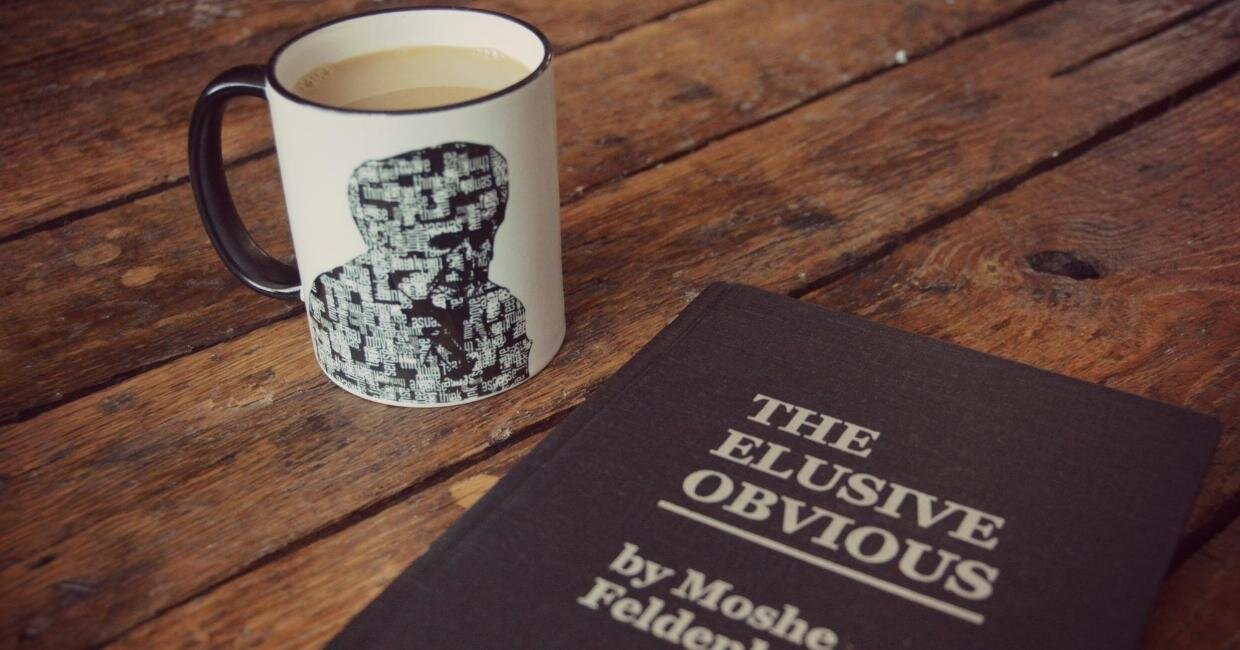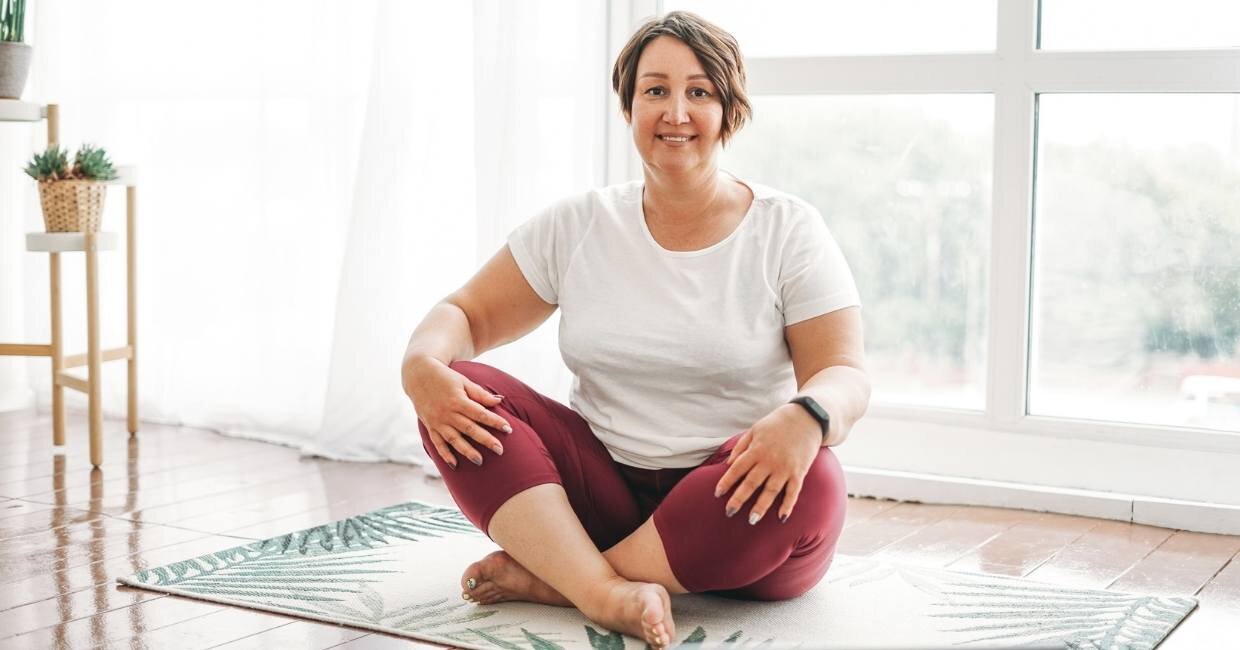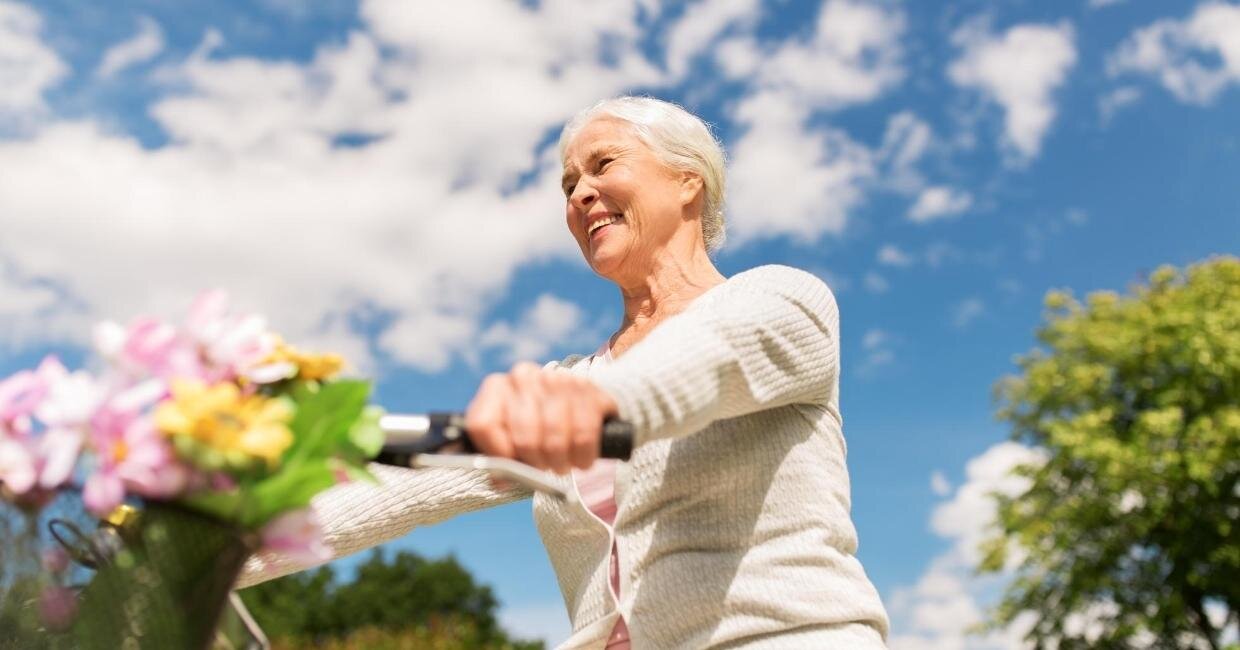blogcast
bodymind
Welcome to the bodymind blogcast, where powerful stories and thought-provoking conversations come to life.
Through solo insights, guest conversations, and real stories from the community, discover how to integrate the power of intellect with intuition. New episodes are released weekly, and include bite-sized clips of 5-20 minutes each, as well as in-depth explorations of 20-45 minutes.
Latest bodymind episodes
explore the full bodymind blog
CATEGORIES
The Fertile Darkness: When Your Body Knows What Your Mind Doesn't
Discover how your midlife body might be working magic you can’t see. This personal story from Feldenkrais training reveals why trusting your body’s natural learning process - even when your mind doubts it - can lead to breakthrough moments. Learn about the “fertile darkness” and how your nervous system continues learning and integrating new patterns long after formal lessons end. Perfect for midlife women learning to trust their bodies again and embrace the wisdom that comes with age.
The Invisible Thread: Why We Heal in Relationship
Have you ever walked into a room and immediately felt the energy shift? Or sat next to someone in meditation and found your practice suddenly deeper, more anchored?
There’s an invisible thread connecting all of us - a field of intelligence that allows healing to ripple from one nervous system to another. In today’s episode, I’m sharing stories from Feldenkrais classrooms, meditation halls, and healing tables that reveal how we actually heal each other simply through our presence.
This isn’t just beautiful theory - it’s neuroscience, and it changes everything about how we approach community, collaboration, and our own healing journey.
The Day I Realized the Body IS the Mind
What if everything you’ve been taught about the separation between mind and body is wrong? What if your body isn’t just carrying out your mind’s commands, but is actually an integral part of your intelligence, memory, and decision-making?
In today’s episode, I’m sharing the moment that completely shifted my understanding of embodied intelligence - and why this realization changes everything about how we approach healing, learning, and living authentically.
Exploring. Learning. Breathing.
Have you ever wondered why you hold your breath when doing something new?
We often take our breath for granted, usually breathing in and out 12-16 times every minute without being aware of it. Most of us only notice our breath when something happens to prevent us from breathing normally. Others intentionally bring their attention to the breath as part of mindfulness practice.
Feldenkrais Is So Much More Than Movement
The book, "The Elusive Obvious," was once only available in Hardback format — which brings me a special kind of sensorial gratification.
As I flip through the dense and fibrous pages, I digest each word of somatic wonder. My mind starts to bend towards a deeper realization that this work, The Feldenkrais Method®, is so much more than movement. What we discover about ourselves can change everything!
Go Fast Without Hurrying
Recently, a person asked:
"I'm interested in the Feldenkrais concept to "go slow without hurrying." Whether it's while eating, walking, etc. Can you explain more about it and how to cultivate that practice?"
My response was relatively short, so I'll expand upon it here. And, I ask that you join me in sharing your experience with fast, slow & hurrying in the comments below. Together, we can start to paint a more comprehensive picture of how to cultivate change.
5 Tips For A Sustainable Mindful Movement Practice
A few weeks ago, I went on a relatively short and easy hike in the woods, a trail I had been on before. It led to a beautiful watering hole where a stream became a waterfall, ultimately flowing into a large pool for swimming before continuing onward. The trail was quite wide and did not have many obstructions to deal with; it was also relatively flat.
Along I plodded, anxious to reach the water to cool off as it was an exceptionally hot and muggy day. Halfway there and my feet and back were already tiring. By the time I reached all the action, which was only a mile in, my feet had moved past tiring to aching.
Feldenkrais or Yoga?
The movements of Feldenkrais® can serve as a conduit to a deeper connection to yourself and is one of the ways in which it’s similar to yoga. The difference, however, is how we go about those movements. But those differences can vary from person-to-person and from teacher-to-teacher (lineage or style).
Moving In Water With Chronic Pain
For better or worse, cold weather has finally arrived in the Northeast. I actually prefer the cool, crisp air of Winter over the hot and muggy days of Summer.
Still, I am not a huge fan of outdoor walks this time of year. So I was faced with the perennial question, “What can I do to keep moving this winter?” My favorite answer: Swimming! Indoors, that is. Probably not surprisingly, I shiver at the thought of joining one of these ‘polar bear’ clubs where some folks run into icy cold lakes in their skivvies!
Resistance & The Salvation of Softness
Have you ever had a moment of subtle resistance? Well, of course, we all have. Here is a little trick I learned while exploring Awareness Through Movement and again while sitting on my cushion. To be frank, it has helped me in just about everything I do.
Recently I noticed I was reluctant to start dinner. Strange. I love to cook. I love to eat. I have a big beautiful box of fresh veggies from my local CSA. So, why on earth was I resisting this?
Movement Of Emotions
Recently a student approached me at the end of class and asked me if experiencing strong emotions while doing Awareness Through Movement was normal. My answer: “Yes.” Emotions don’t surface all of the time, but it does happen, and the intensity of the experience can vary.
When I first started reading Moshe Feldenkrais’ books nearly 25 years ago, I was utterly obsessed with the mind-body connections—specifically how I could shift my emotional base and perspectives by working with my body. I consumed his writings along with those of Ida Rolf, Alexander Lowen, and books like Emotional Anatomy.
Journey Back To Wellness with Ankylosing Spondylitis
Forty years ago, my life was abruptly altered. It was my last year of college, and I woke up one night with so much pain in my ribs – both front and back – that I had difficulty breathing.
It continued to happen night after night, and I knew that I’d better get it checked out.
Introduction To The Body Scan
Finally, a good excuse to lie down and do nothing! Ok. Maybe not quite nothing.
Exploring the art of Body Scans is a wonderful way of developing skills such as embodied awareness (i.e., being able to sense yourself), concentration, and focused attention. Plus, body scanning can is an effective ‘pre-movement’ strategy or end of the day stress-reduction practice.
Images Of Aging The Feldenkrais Way
We have all been told that aging brings with it aches, pains, and loss of function. Many of us have even accepted the fact that joint pain is inevitable and that we will someday have to give up doing those things that bring us the most joy.
But what if there’s another way?
Self-Image, Cultural Neuroscience & The Feldenkrais Method
I am intrigued by how we develop our self-image over our lifetime and how we can consciously choose to shift that image.
I am currently on my fifth read of Awareness Through Movement by Moshe Feldenkrais. I read this book for the first time nearly fifteen years ago, and I am in awe as to what shifts in perspective and what stands out whenever I return to a great book.

